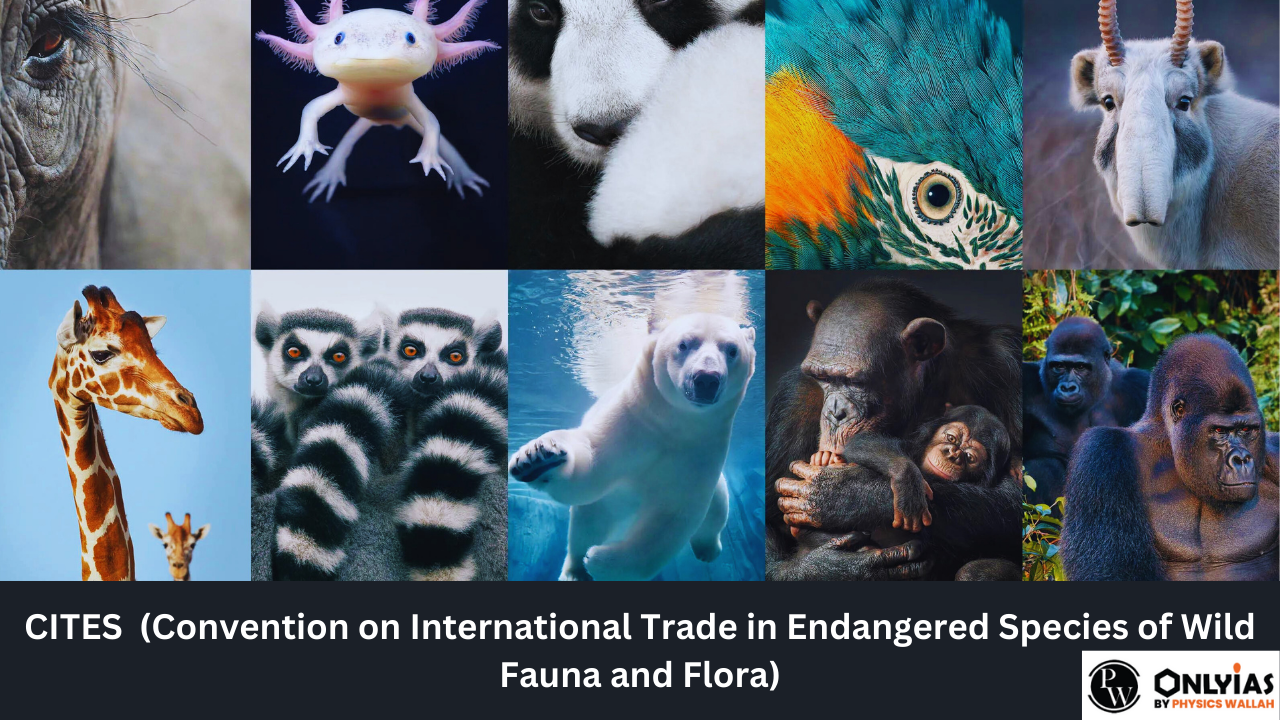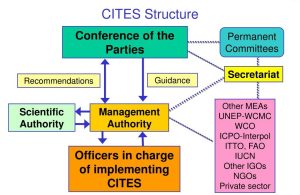Learn about the full form of CITES - Convention on International Trade in Endangered Species of Wild Fauna and Flora. Explore how CITES regulates global wildlife trade to ensure species conservation and prevent extinction.

CITES stands for the “Convention on International Trade in Endangered Species of Wild Fauna and Flora.” CITIES is a pivotal international agreement that addresses the critical issue of protecting and conserving wild animals and plants threatened by international trade. Established in 1973, CITES aims to strike a balance between the demand for these species and their need for survival in their natural habitats.
The Convention on International Trade in Endangered Species of Wild Fauna and Flora, often abbreviated as CITES, is an international agreement among governments. Its main goal is to ensure that international trade in wild animals and plants doesn’t threaten their survival. In other words, it aims to prevent species from becoming endangered or extinct due to excessive trade.
| CITES Full Form | |
|---|---|
| Full Form | Convention on International Trade in Endangered Species of Wild Fauna and Flora |
| Established | 1973 |
| Members | 184 Parties |
| Appendix | Appendix I: Species facing highest risk of extinction; trade highly restricted.
Appendix II: Species not immediately threatened, but trade controlled to prevent future threats. Appendix III: Species protected by at least one country, seeking cooperation from other Parties. |
| Goals | Prevent extinction of species due to trade, Ensure sustainable trade of species and Combat illegal trade. |

The structure of the Convention on International Trade in Endangered Species of Wild Fauna and Flora (CITES) is organized to facilitate international cooperation among its member countries (Parties) and to effectively regulate the trade of endangered species. Here’s an overview of its structure:
The Convention on International Trade in Endangered Species of Wild Fauna and Flora (CITES) serves several important functions to achieve its overarching goal of ensuring the conservation of species threatened by international trade. Some of its key functions include:
The CITES Classification, also known as CITES Appendix, refers to the categorization of species under the Convention on International Trade in Endangered Species of Wild Fauna and Flora (CITES). This classification is a central aspect of CITES’s efforts to regulate and monitor international trade in various species to ensure their conservation and prevent their overexploitation.
CITES classifies species into three different appendices based on their conservation status and the level of protection they require:
The Convention on International Trade in Endangered Species of Wild Fauna and Flora (CITES) has made significant contributions to global conservation efforts and has had a positive impact on various aspects of wildlife protection, biodiversity conservation, and sustainable trade. Some of its key contributions include:
India is a significant participant in the Convention on International Trade in Endangered Species of Wild Fauna and Flora (CITES). Here’s an overview of the scenario between CITES and India:
Key aspects of the Conference of the Parties (CoP) meeting and the discussions around the trade in ivory.
The international ivory trade refers to the buying and selling of ivory, which is a valuable material obtained from the tusks of elephants and, to a lesser extent, other animals like walruses and narwhals. Ivory has historically been used for various purposes, including crafting intricate sculptures, jewelry, and decorative items.
However, the international ivory trade has been a significant contributor to the decline of elephant populations, particularly African elephants. Poaching, driven by the demand for ivory, has led to a devastating decrease in elephant numbers due to illegal hunting and the illegal trade of ivory products. This has serious ecological and ethical implications and threatens the survival of these majestic animals.
In response to the detrimental impact of the ivory trade on elephant populations and ecosystems, several measures have been taken:
India’s historical stance on the ivory trade and its involvement with the Convention on International Trade in Endangered Species of Wild Fauna and Flora (CITES). India’s strong commitment to the conservation of elephants and the prevention of ivory trade:
The recent agreement and cooperation between India and Namibia, particularly regarding the transfer of cheetahs and broader areas of collaboration. This collaboration reflects a multi-faceted effort between the two countries to enhance biodiversity conservation and promote sustainable environmental practices. Some key points from the information you’ve shared include:
| Related Links | |
|---|---|
| Environment Laws and Policies | Wildlife Conservation |
| List of Largest Volcanoes In The World |
|
| Must Read | |
| NCERT Notes For UPSC | UPSC Daily Current Affairs |
| UPSC Blogs | UPSC Daily Editorials |
| Daily Current Affairs Quiz | Daily Main Answer Writing |
| UPSC Mains Previous Year Papers | UPSC Test Series 2024 |
CITES is an international agreement aimed at regulating and monitoring the international trade of endangered wild animals and plants to ensure their survival and prevent their extinction.
CITES classifies species into three appendices based on their conservation status. Trade in species listed in these appendices is regulated, with varying degrees of control depending on the level of threat.
CoP is the decision-making body of CITES, where member countries meet to discuss and make decisions on various matters related to the convention's implementation, species listing, and other conservation issues.
Ivory trade has driven elephant poaching, leading to drastic declines in elephant populations. CITES plays a critical role in regulating ivory trade and protecting elephants from illegal hunting.
CITES enhances enforcement through its regulations and supports law enforcement agencies in member countries. It also encourages information sharing, capacity building, and cooperation to counter illegal wildlife trade.

<div class="new-fform">
</div>